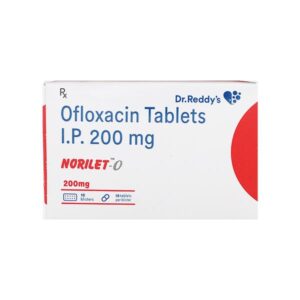NORFLOXACIN
NORFLOXACIN: Norfloxacin is an antibiotic drug that belongs to the class of medications known as fluoroquinolones. It is primarily prescribed for the treatment of bacterial infections, particularly those affecting the urinary tract, prostate, and gastrointestinal tract.
The mechanism of action of norfloxacin involves inhibiting the activity of bacterial DNA gyrase and topoisomerase IV enzymes, which are responsible for the replication and repair of bacterial DNA. By interfering with these processes, norfloxacin effectively kills the bacteria and prevents the infection from spreading.
The recommended dose of norfloxacin may vary depending on the specific infection being treated. However, the usual adult dose is 400 mg taken twice daily for a duration of 3 to 10 days, depending on the severity and type of infection. It is important to follow the dosage instructions provided by the prescribing physician or indicated on the medication label.
Like all medications, norfloxacin may cause some side effects. The most common side effects include nausea, vomiting, diarrhea, stomach pain, headache, and dizziness. Other less common but potentially serious side effects include tendonitis, tendon rupture, hypersensitivity reactions, and central nervous system effects such as seizures or confusion.
It is essential to inform your healthcare provider about any existing medical conditions, allergies, or medications you are currently taking before starting norfloxacin. Additionally, it is crucial to complete the full course of treatment as prescribed by the doctor, even if the symptoms improve, to ensure the complete eradication of the infection and prevent the development of antibiotic-resistant bacteria.

